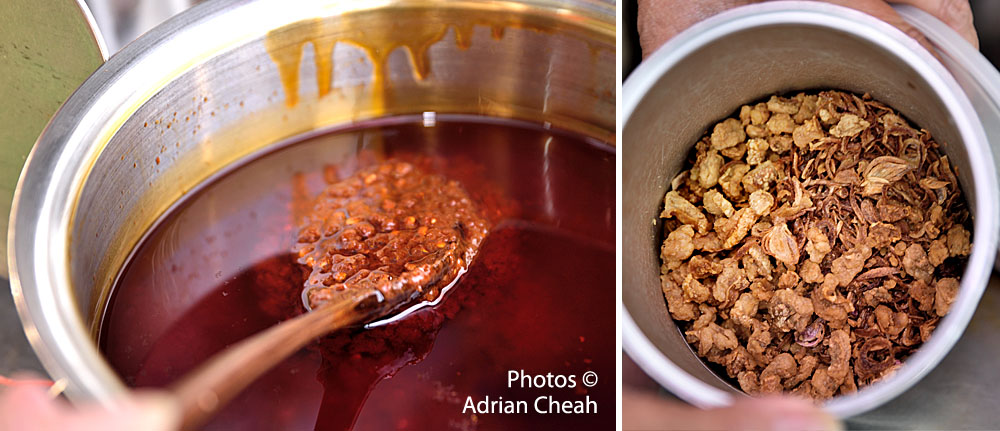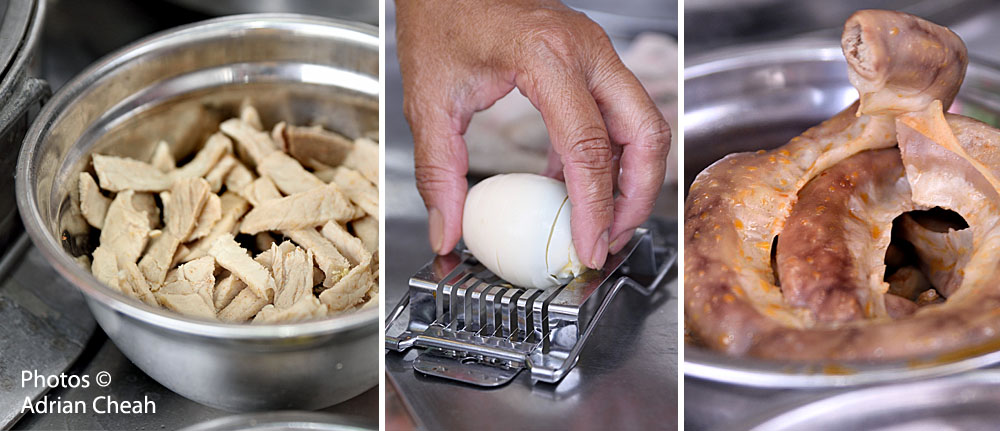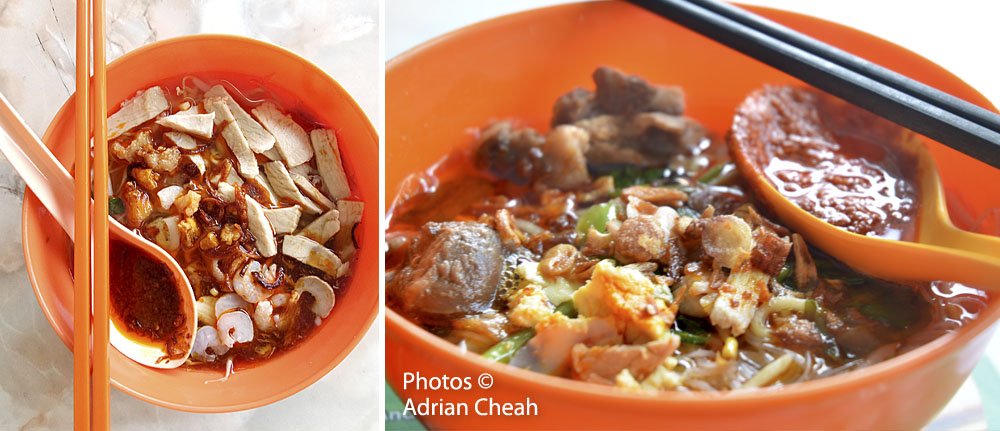The good ol' classic taste of Penang's Hokkien mee

In 1989, Mr Lim Chong Beng, the only son in the family, took over the family Hokkien mee business from his parents when they were too old to carry on. A bowl was then selling for a mere 80 cents.

With an already established clientele, he was able to expand the business. Dubbed Ah Beng Hokkien Mee, his offering has been popular in Penang, recalls Ms Lee Phaik Hwa who runs Lean Hin coffeeshop next to Moh Ghee School in Perak Lane. Ms Lee took over the coffeeshop business from her parents in the early 1970s and regales Ah Beng's booming business. It is from this very location that Ah Beng sold his delicious Hokkien mee.
Madam Ooi Gaik Tin who has been helping her husband continued the Hokkien mee business when he passed away in 2013.

In Penang, Hokkien mee is a popular hawker food easily available throughout the land for breakfast and lunch, as well as dinner at some coffeeshops. It is a spicy soup-based dish served with of blanched bee hoon (rice vermicelli) and mee (yellow egg noodles), taugeh (bean sprouts), kangkung (water spinach/morning glory), garnished with slices of boiled egg and pork, shrimps (some sliced thinly), fried shallots, bak eu pok (crispy fried lard) with a dollop of chilli paste.

The magic of this delicious hawker delight lies in its umami gravy. Traditionally, the shrimp heads and shells are stir-fried in a hot wok until aromatic then simmering with a pork bone stock for hours. For Madam Ooi, this process starts in the wee hours of the morning, at 4:00 am. She uses chunks of huge shin pork bones to prepare her superior stock. A satisfying bowl of Hokkien mee must have good stock.
In Penang, halal versions of Hokkien mee are available. To me however, it is difficult to replicate the superior stock and flavours Madam Ooi prepares if pork bones are replaced by chicken carcasses. The taste would definitely be very different.
Madam Ooi's parents-in-law were from Fujian, the south-eastern coast of China. They must have arrived in Penang in the early 1900s, seeking a better life. The Taiping Rebellion (1850 –1864) and the Punti-Hakka Clan Wars (1855–1867) could have brought great hardship to the people in the southern provinces, leading many to migrate overseas.



According to Madam Ooi, her in-laws were resourceful and extremely hard working. These qualities appear to be less evident in the younger Penang Chinese generation of today, perhaps because of the prosperity boom paved by the blood, toil, tears and sweat of our forefathers.
When Madam Ooi's mother-in-law first arrived on the island, she started off her business selling Nyonya cakes. She must have learnt this from friends or relatives from the first (1400s) or the second (1600s) waves of Chinese immigrants who by then would have established themselves in Penang. Later, when she learnt how to make Hokkien mee, she switched over and never looked back.
Like many of the hawker paddlers of the day, she travelled to where her patrons were, plying a familiar route in Perak Lane in the mornings and Green Lane in the afternoons that gained her a legion of loyal customers. In the 1950s, a bowl of Hokkien mee cost only 20 cents.
In the 1970s, when I visited my auntie who lived in Green Lane, I remember the wantan mee seller who would knock a bowl with a chopstick to announce his arrival. My auntie would rush out from her house, hailing him. She would also offer her own bowls to place the noodles. Through the years, many of these push-cart hawkers would eventually settle down at a spot and customers would then come to them. Madam Ooi's mother-in-law found her spot next to the Moh Ghee School in Perak Lane. Madam Ooi is proud to continue the business at the very same spot and soon, her son Thean Tatt will take over the reins. Today, he helps her in the morning, dishing out delicious bowls of Hokkien mee.

Madam Ooi fries her own shallots and makes her own bak eu pok. Using grounded dried chillies (and when available, some bird's eye chillies for an extra oomph), she also cooks up a batch of her own chilli paste daily. She adds a good amount of the shallot oil to further enhance the fragrant chilli paste. Madam Ooi refrains from using store-bought, mass produced grounded "chilli boh" as this would render a sourish hint to the chilli paste. Surprisingly some stalls in Penang nonchalantly use the chilli boh directly from a bought packet – this is such a disappointment.

Madam Ooi takes great pride in offering an authentic bowl of Hokkien mee. Patrons have the option to add tender braised pork ribs, fish balls, gelatinous slices of pork skin and intestines (a Chinese delicacy) for an additional fee.
At some stalls in Penang where you can add large prawns and crispy sio bak (Chinese roast pork) for a hefty fee. For me however, authentic Hokkien mee with its standard trimmings is sufficient. Adding more ingredients does not necessarily enhance the dining experience but could, as a matter of fact, alter its flavours. Take for example the addition of sio bak; seasoned with five spice powder, it is usually salty and greasy and therefore should not be added to Hokkien mee. However, the crazy intent to up-sell and to escalate prices has to be justified!


Where do you go for the best Hokkien mee in Penang? Well, since taste is so subjective, I would recommend that you shortlist some popular spots, sample them and decide for yourself. Remember to try Madam Ooi's Hokkien mee which has remained faithful to the authentic flavours.
------------------------------------
Hokkien mee, in and out of Penang
In Penang, Hokkien mee is served in a flavourful prawn-based broth. (Out of Penang, this is known as Prawn mee.)
In Kuala Lumpur, Hokkien mee is a darker, stir-fried dish using thick yellow noodles. (In Penang, we call this tai lok mee.)
In Singapore, Hokkien mee is stir-fried yellow noodles with an assortment of seafood. (In Penang, we call this Hokkien char.)

Ah Beng Hokkien Mee (next to Moh Ghee School)
Daily in the mornings from 7:00 am onwards till finish (around noon) except Sundays
Push cart stall in front of Lean Hin coffeeshop
No. 90 Lorong Perak, 10150 Penang
------------------------------------
Written and photographed by Adrian Cheah
© All rights reserved
23 February 2022